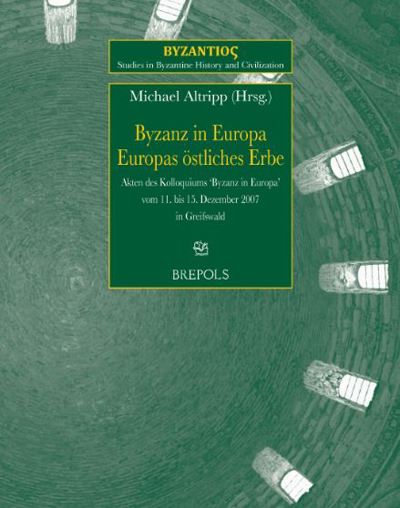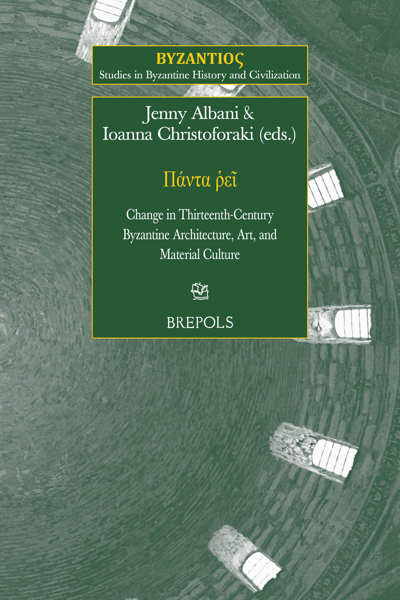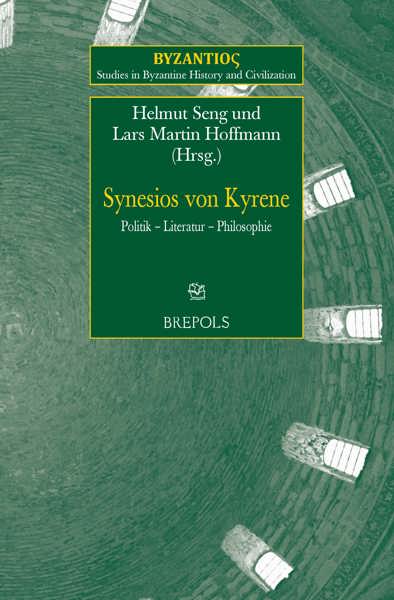
Πάντα ῥεῖ
Change in Thirteenth-Century Byzantine Architecture, Art, and Material Culture
Jenny P. Albani, Ioanna Christoforaki (eds)
- Pages: 449 p.
- Size:156 x 234 mm
- Illustrations:24 b/w, 149 col., 3 maps b/w, 2 maps color
- Language(s):English
- Publication Year:2023
- € 90,00 EXCL. VAT RETAIL PRICE
- ISBN: 978-2-503-60268-4
- Paperback
- Available
This book sheds new light on the nexus of changes in thirteenth-century architecture, art and material culture of Byzantium after its fall to the Latins of the Fourth Crusade
"The volume successfully advocates for the complexity and richness of the period, particularly of the decades of Latin rule, and ignites new avenues of research in these and other parts of the eastern Mediterranean, such as Anatolia, including the empire of Trebizond. (...) This well-curated and engaging volume can be recommended for students and scholars interested in the thirteenth-century East Mediterranean, the state of the East Roman empire during the Latin occupation, as well as east-west exchanges prior to and after the Fourth Crusade." (Georgios Makris, in The Medieval Review 25.01.17)
"The book will be a welcome addition to any Byzantinist’s library, because it provides a “snapshot” of current scholarship among European and North American experts." (Charles Anthony Stewart, in Church History, 93/2, 2024, p. 386)
« (...) on a là une série d’éclairages de fort bonne tenue, pourvus d’une solide information bibliographique et bénéficiant d’une illustration de qualité. Le tout s’avère ainsi propre à enrichir substantiellement la perception d’une phase cruciale des relations entre Byzance et la Latinité. » (Jean-Pierre Caillet, dans Le Moyen Âge, 131/1, 2025, p. 218)
Dr. Jenny P. Albani, architect – art historian (National Technical University of Athens and Vienna University), is a former exhibition curator at the Hellenic Ministry of Culture and Sports.
Dr. Ioanna Christoforaki, archaeologist – art historian (National Kapodistrian University of Athens and Oxford University), is currently an associate researcher at the Academy of Athens.
Both editors have published extensively on Byzantine art and culture.
The year 1204, when Byzantium was conquered by the participants of the Fourth Crusade, marks a major and violent change on several levels, including politics and the economy, society and religion, as well as art and culture. The once powerful empire experienced both the humiliation of foreign occupation and its political subjugation. After its re-establishment in 1261, Byzantium had become a shrunken state, surrounded by aggressive enemies, while a number of its vital areas, such as Crete and Cyprus, together with the Aegean and Ionian islands, remained under foreign rule. These changes influenced not only the artistic output but the everyday life of the Byzantines as well. New ideas, new preferences, and new techniques are attested in architecture, painting, sculpture, and minor arts, all of which developed a new dynamic.
According to the Greek philosopher Heraclitus of Ephesos (c. 535 – c. 475 B.C.), whose aphorism Πάντα ῥεῖ, i.e. everything flows, is highlighted in the title of this collective volume, change is the fundamental essence of the universe. The book aims to provide an up-to-date, well-rounded, and balanced overview of the long thirteenth century, by examining aspects of the artistic and cultural transformations created and developed within the new framework of co-existence among Byzantines, Latins, Slavs, and Ottomans.
Notes on Contributors
List of Figures
Acknowledgments
Introduction
Jenny P. Albani and Ioanna Christoforaki
PART I. A Capital Exiled, A Capital Regained
Chapter 1
Loss, Memory, and Exile: Innovation and Simulation in Laskarid Art and Architecture
Naomi Ruth Pitamber
Chapter 2
Brickwork and Façade: Envisioning the Apse of the Church of Saint John the Baptist at the Lips Monastery Jasmina S. Ćirić
PART II Artistic Developments and Interactions in the Christian East
Chapter 3
Tradition and Transition on the Slopes of the Pentadaktylos Mountain in Thirteenth-Century Cyprus
Nikolas Bakirtzis
Chapter 4
Icons of the Virgin Nursing at Sinai and the Question of the Origins of the Madonna dell’Umiltà
Irene Leontakianakou
Chapter 5
An Unknown Frankish Icon of the Mother of God
Michele Bacci
Chapter 6
Changes and Innovation: Reassessing Thirteenth-Century Byzantine Manuscript Illumination
Marina Toumpouri
PART III Regional Styles and New Cultural Identities
Chapter 7
Architectural Sculpture during the Thirteenth Century: Cultural Interactions Shaping New Regional Identities
Catherine Vanderheyde
Chapter 8
Artistic Links between Epiros, Prilep, and Berroia in the Late Thirteenth Century: Continuity and Change in Monumental Painting
Leonela Fundić
Chapter 9
A Missing Link in the Development of Relief Haloes: The Evidence from Macedonia
Nikolaos Siomkos
PART IV New Data on Everyday and Luxury Objects
Chapter 10
Changing Byzantium: The Thirteenth Century Viewed through Its Pottery: Summary of the Evidence, Main Trends, Thoughts for Future Directions
Anastasia G. Yangaki
Chapter 11
Slow Paces of Change in Byzantine Material Culture: Dress in the Thirteenth Century
Pari Kalamara
Chapter 12
New Light on Byzantine Enamels of the Thirteenth Century
Antje Bosselmann-Ruickbie
PART V Envisaging and Visualizing Death
Chapter 13
Eloquent Texts, Colourful Images: Visionary Scenes at the Refectory of the Patmos Monastery
Konstantia Kefala
Chapter 14
Is Everything Dead after Death? Mural Paintings of the Last Judgment and the Eschatological Preoccupations of the Thirteenth Century.
Dimitra Kotoula
In Conclusion
Jenny P. Albani and Ioanna Christoforaki
Index of Persons
Topographical Index




